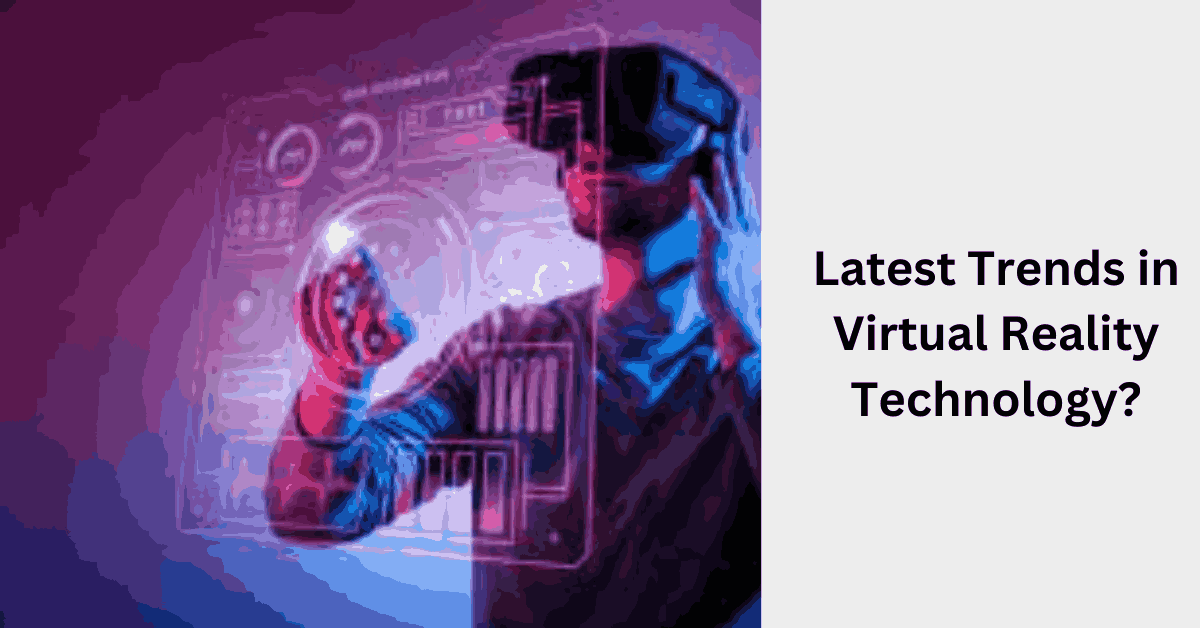In the realm of technology, few innovations have captured the imagination and potential for transformation as vividly as virtual reality (VR).
As we navigate the ever-evolving landscape of digital experiences, it’s crucial to explore the latest trends in VR technology.
From entertainment to education and beyond, these trends are shaping the future of immersive experiences and redefining the way we interact with the digital world.
1. Augmented Reality (AR) Integration:
The convergence of virtual reality with augmented reality is a trend gaining momentum. Augmented reality enhances real-world experiences by overlaying digital information onto the physical environment. In the context of VR, this integration allows users to seamlessly blend virtual elements with their surroundings, opening up new possibilities for interactive storytelling, gaming, and professional applications.
2. Social VR Experiences:
Virtual reality is no longer a solitary endeavor. The latest trend emphasizes social interaction within VR environments. Platforms and applications are emerging to facilitate shared experiences, enabling users to connect with friends, family, and even strangers in virtual spaces. Social VR experiences range from collaborative workspaces to virtual events, providing a sense of presence and connection.
3. VR for Training and Simulation:
Industries are increasingly turning to VR for training and simulation purposes. From healthcare professionals practicing surgeries to aviation personnel honing their skills, virtual reality offers a safe and immersive environment for realistic training scenarios. This trend extends beyond traditional fields to include corporate training, enhancing employee skill development and knowledge retention.
4. Extended Reality (XR):
Extended Reality, encompassing VR, AR, and mixed reality, represents a holistic approach to immersive technologies. This trend involves the seamless integration of virtual and real-world elements, providing users with a spectrum of experiences. XR applications are diverse, ranging from immersive storytelling and gaming to practical solutions in industries such as architecture and engineering.
5. Advances in VR Hardware:
The hardware landscape for virtual reality is evolving rapidly. Lightweight, wireless VR headsets with improved display resolutions and enhanced haptic feedback are becoming more accessible. This trend not only contributes to a more comfortable and immersive user experience but also expands the potential applications of VR across various demographics.
6. VR in Healthcare and Therapy:
Virtual reality is making significant inroads into healthcare, offering therapeutic solutions for physical and mental health. From pain management to exposure therapy for anxiety disorders, VR technology provides a controlled and immersive environment for therapeutic interventions. This trend highlights the potential for VR to revolutionize the way we approach healthcare and wellness.
7. Environmental and Sustainable VR:
With growing awareness of environmental issues, there is a rising trend towards sustainable and eco-friendly VR experiences. This involves not only the development of energy-efficient hardware but also a focus on creating virtual environments that raise awareness about environmental conservation. VR is increasingly being used as a tool to educate and inspire action on climate-related issues.
8. AI Integration for Realistic Interactions:
Artificial intelligence is playing a pivotal role in enhancing the realism of VR interactions. The integration of AI algorithms enables more dynamic and responsive virtual environments. Whether it’s creating lifelike characters in VR games or enhancing the realism of virtual training scenarios, AI contributes to a more immersive and adaptive user experience.
In conclusion,
the latest trends in virtual reality technology are pushing the boundaries of what is possible in the digital realm. From the convergence of AR and VR to the socialization of virtual experiences, these trends not only cater to entertainment but also offer practical solutions in education, training, healthcare, and beyond. As technology continues to advance, the future promises even more exciting developments in the world of virtual reality, opening doors to unprecedented possibilities for immersive and interactive digital experiences.
